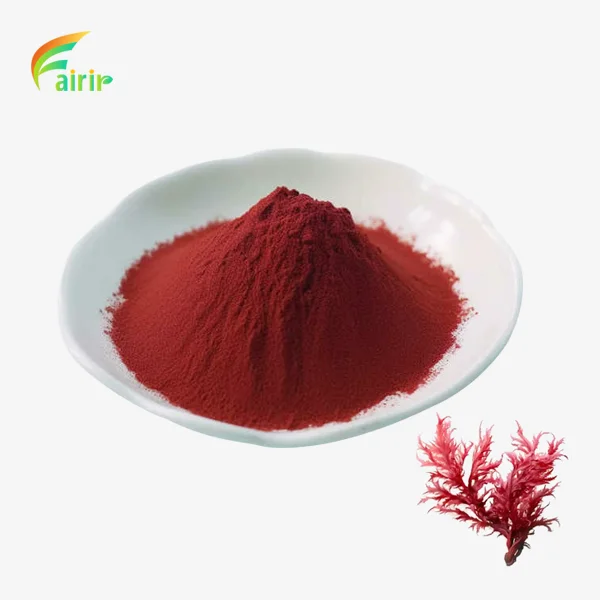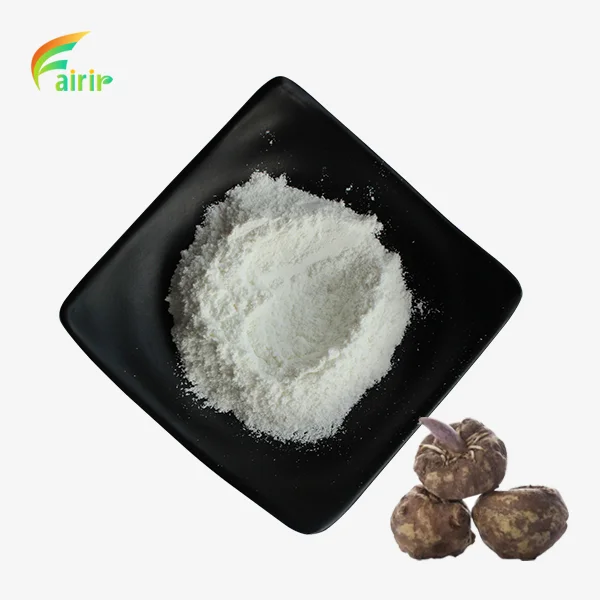How does Squalane oil interact with other skincare ingredients?
Squalane oil has become a staple in many skincare routines due to its versatility and compatibility with various ingredients. This lightweight, non-comedogenic oil is derived from plants and closely mimics the skin's natural sebum, making it an excellent choice for all skin types. Understanding how squalane oil interacts with other skincare ingredients is crucial for maximizing its benefits and creating effective skincare formulations. In this blog post, we'll explore the synergistic relationships between squalane oil and other popular skincare ingredients, including hydrators, active ingredients, and antioxidants. By delving into these interactions, we'll uncover how squalane oil can enhance the performance of your skincare routine and contribute to healthier, more radiant skin. Whether you're a skincare enthusiast or a formulator looking to create innovative products, this comprehensive guide will provide valuable insights into the dynamic world of squalane oil and its interactions with other skincare powerhouses.
Synergy with Hydrators: Squalane Oil and Hyaluronic Acid for Enhanced Moisture Retention
Boosting Hydration Levels
Squalane oil works synergistically with hyaluronic acid to provide superior hydration to the skin. While hyaluronic acid attracts and binds water molecules to the skin's surface, squalane oil forms a protective barrier that locks in this moisture. This combination creates a powerful hydrating effect that can significantly improve skin texture and plumpness. The lightweight nature of squalane oil allows it to penetrate deeply into the skin, carrying the hydrating benefits of hyaluronic acid along with it. This dual-action approach ensures that the skin remains hydrated for extended periods, making it an excellent choice for those with dry or dehydrated skin.

Improving Ingredient Delivery
Squalane oil's ability to enhance the penetration of other skincare ingredients makes it an ideal partner for hyaluronic acid. When combined, squalane oil helps to transport hyaluronic acid deeper into the skin, allowing for more effective hydration at multiple layers. This improved delivery system ensures that the benefits of hyaluronic acid are maximized, leading to better overall skin health. Additionally, the emollient properties of squalane oil help to smooth and soften the skin's surface, creating an ideal canvas for the application of other skincare products.
Balancing Skin's Moisture Barrier
The combination of squalane oil and hyaluronic acid works to strengthen and balance the skin's natural moisture barrier. Squalane oil's similarity to the skin's natural sebum allows it to integrate seamlessly into the lipid barrier, reinforcing its protective function. Meanwhile, hyaluronic acid helps to maintain optimal hydration levels within the skin. This balanced approach to moisturization helps to prevent transepidermal water loss and protect the skin from environmental stressors. Over time, consistent use of this powerful duo can lead to improved skin resilience, reduced sensitivity, and a more even complexion.
Buffering Irritation: How Squalane Oil Soothes Skin When Used With Retinoids or Other Potent Actives
Reducing Retinoid-Induced Irritation
Squalane oil plays a crucial role in mitigating the potential irritation caused by retinoids, such as retinol or tretinoin. These potent anti-aging ingredients can sometimes lead to dryness, redness, and peeling, especially during the initial stages of use. By incorporating squalane oil into a retinoid-based skincare routine, users can experience a significant reduction in these side effects. The oil's emollient properties help to soothe and calm the skin, while its barrier-strengthening abilities protect against excessive moisture loss. This buffering effect allows for a more comfortable and consistent use of retinoids, potentially improving long-term adherence to the treatment and enhancing overall results.
Enhancing Tolerability of Acid-Based Exfoliants
When used in conjunction with acid-based exfoliants like glycolic, lactic, or salicylic acid, squalane oil can help to improve skin tolerability. These active ingredients, while effective for addressing various skin concerns, can sometimes cause irritation or excessive dryness. Squalane oil's ability to reinforce the skin barrier and provide gentle hydration makes it an excellent companion to these exfoliating agents. By applying squalane oil before or after acid treatments, users can help minimize potential irritation while still reaping the benefits of exfoliation. This combination can be particularly beneficial for those with sensitive or reactive skin types who want to incorporate chemical exfoliants into their routine without compromising skin comfort.
Supporting Skin Recovery
Squalane oil's soothing and nourishing properties make it an ideal ingredient for supporting skin recovery after the use of potent active ingredients. Whether dealing with the drying effects of benzoyl peroxide or the potential irritation from vitamin C serums, squalane oil can help to restore balance to the skin. Its lightweight yet deeply moisturizing nature allows it to provide relief without clogging pores or exacerbating skin issues. By incorporating squalane oil into a routine that includes strong actives, users can help maintain skin health and resilience, potentially reducing downtime and improving overall treatment outcomes. This supportive role makes squalane oil a valuable addition to any comprehensive skincare regimen.
Complementing Antioxidants: Combining Squalane Oil with Vitamin C, E, Niacinamide and Botanical Extracts
Enhancing Antioxidant Efficacy
Squalane oil's unique properties make it an excellent carrier for antioxidants, significantly enhancing their efficacy when used in combination. When paired with powerful antioxidants like vitamin C and E, squalane oil helps to stabilize these ingredients and improve their penetration into the skin. This synergistic effect can lead to more potent protection against free radical damage and oxidative stress. The oil's ability to form a protective barrier on the skin's surface also helps to prolong the contact time of antioxidants with the skin, potentially increasing their overall effectiveness. For those looking to maximize the anti-aging and protective benefits of their skincare routine, combining squalane oil with antioxidant-rich formulations can provide a comprehensive approach to skin health.
Boosting Niacinamide's Benefits
When used in conjunction with niacinamide, squalane oil can help to amplify its skin-benefiting properties. Niacinamide, known for its ability to improve skin texture, minimize pores, and regulate sebum production, works well with squalane oil's moisturizing and barrier-strengthening capabilities. The combination of these two ingredients can lead to a more balanced and refined complexion. Squalane oil's lightweight nature ensures that it doesn't interfere with niacinamide's absorption, allowing both ingredients to work effectively. This pairing is particularly beneficial for those with combination or oily skin types, as it provides hydration without excessive oiliness while supporting overall skin health.
Enhancing Botanical Extract Delivery
Squalane oil serves as an excellent vehicle for delivering botanical extracts to the skin. Its molecular structure allows it to penetrate deeply, carrying along with it the beneficial compounds found in plant extracts. Whether working with calming ingredients like chamomile or green tea extract, or more potent botanicals like bakuchiol or rosehip oil, squalane oil can enhance their absorption and effectiveness. This improved delivery system ensures that the skin receives the maximum benefits from these natural ingredients. Additionally, squalane oil's soothing properties can help to mitigate any potential irritation from more active botanical extracts, making it an ideal companion for a wide range of plant-based skincare formulations.
Conclusion
Squalane oil's versatility and compatibility with various skincare ingredients make it a valuable addition to any skincare routine. Its ability to enhance hydration, buffer irritation from potent actives, and complement antioxidants demonstrates its multifaceted benefits. By understanding these interactions, formulators and skincare enthusiasts can create more effective and well-rounded skincare regimens. As research continues to unveil the potential of squalane oil, its role in skincare is likely to expand, offering even more possibilities for achieving healthy, radiant skin.

At Shaanxi Fairir Biotech Co., Ltd. we pride ourselves on being a leading manufacturer and supplier of high-quality plant extracts, including pure squalane oil. Our state-of-the-art GMP-certified facility, equipped with advanced technology and stringent quality control measures, ensures that we deliver products of the highest standard. We are committed to providing innovative, sustainable, and effective solutions that meet the evolving needs of the pharmaceutical, nutraceutical, cosmetic, and food industries. For more information about our squalane oil and other plant extracts, please contact us at sales@fairirbiotech.com.
FAQ
Q: Can squalane oil be used with all skin types?
A: Yes, squalane oil is suitable for all skin types due to its lightweight, non-comedogenic nature.
Q: How often should I use squalane oil in my skincare routine?
A: Squalane oil can be used daily, both in the morning and evening routines, depending on your skin's needs.
Q: Can squalane oil replace my moisturizer?
A: While squalane oil is hydrating, it's best used in combination with a moisturizer for optimal hydration.
Q: Is squalane oil safe to use with retinoids?
A: Yes, squalane oil can help buffer potential irritation from retinoids and improve overall tolerability.
Q: Can I mix squalane oil directly with my other skincare products?
A: Yes, squalane oil can be mixed with most skincare products to enhance their benefits and improve application.
References
1. Huang, Z. R., Lin, Y. K., & Fang, J. Y. (2009). Biological and pharmacological activities of squalene and related compounds: potential uses in cosmetic dermatology. Molecules, 14(1), 540-554.
2. Sethi, A., Kaur, T., Malhotra, S. K., & Gambhir, M. L. (2016). Moisturizers: The slippery road. Indian journal of dermatology, 61(3), 279-287.
3. Wolosik, K., Knas, M., Zalewska, A., Niczyporuk, M., & Przystupa, A. W. (2013). The importance and perspective of plant-based squalene in cosmetology. Journal of cosmetic science, 64(1), 59-66.
4. Kim, S. K., & Karadeniz, F. (2012). Biological importance and applications of squalene and squalane. Advances in food and nutrition research, 65, 223-233.
5. Laszlo, J. A., Compton, D. L., & Vermillion, K. E. (2008). Acyl migration kinetics of vegetable oil 1, 2-diacylglycerols. Journal of the American Oil Chemists' Society, 85(4), 307-312.
6. Pham, D. M., Boussouira, B., Moyal, D., & Nguyen, Q. L. (2015). Oxidization of squalene, a human skin lipid: a new and reliable marker of environmental pollution studies. International journal of cosmetic science, 37(4), 357-365.











_1751965378790.webp)